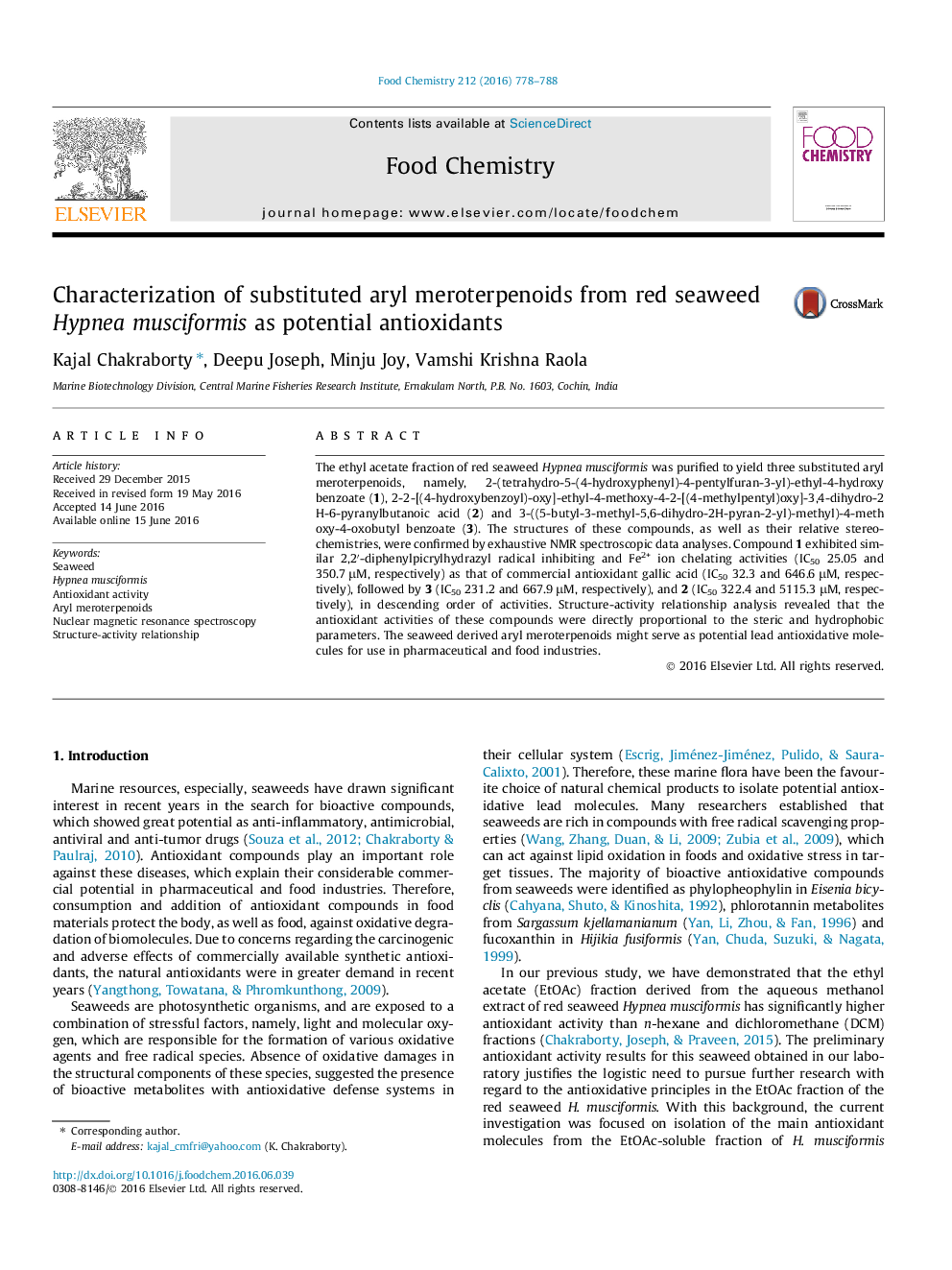| Article ID | Journal | Published Year | Pages | File Type |
|---|---|---|---|---|
| 1185099 | Food Chemistry | 2016 | 11 Pages |
•Ethyl acetate fraction from the crude extract of Hypnea musciformis was purified.•Three aryl meroterpenoids with potential antioxidative activities were isolated.•Antioxidant activity of compound 1 was higher than gallic acid.•Antioxidant activities were directly proportional to steric and hydrophobic parameters.•Potential as natural antioxidant leads in the pharmaceutical and food industry.
The ethyl acetate fraction of red seaweed Hypnea musciformis was purified to yield three substituted aryl meroterpenoids, namely, 2-(tetrahydro-5-(4-hydroxyphenyl)-4-pentylfuran-3-yl)-ethyl-4-hydroxybenzoate (1), 2-2-[(4-hydroxybenzoyl)-oxy]-ethyl-4-methoxy-4-2-[(4-methylpentyl)oxy]-3,4-dihydro-2H-6-pyranylbutanoic acid (2) and 3-((5-butyl-3-methyl-5,6-dihydro-2H-pyran-2-yl)-methyl)-4-methoxy-4-oxobutyl benzoate (3). The structures of these compounds, as well as their relative stereochemistries, were confirmed by exhaustive NMR spectroscopic data analyses. Compound 1 exhibited similar 2,2′-diphenylpicrylhydrazyl radical inhibiting and Fe2+ ion chelating activities (IC50 25.05 and 350.7 μM, respectively) as that of commercial antioxidant gallic acid (IC50 32.3 and 646.6 μM, respectively), followed by 3 (IC50 231.2 and 667.9 μM, respectively), and 2 (IC50 322.4 and 5115.3 μM, respectively), in descending order of activities. Structure-activity relationship analysis revealed that the antioxidant activities of these compounds were directly proportional to the steric and hydrophobic parameters. The seaweed derived aryl meroterpenoids might serve as potential lead antioxidative molecules for use in pharmaceutical and food industries.
